Modern society created buildings for our safety: to protect against the elements. Now, in the midst of a pandemic, however, the space inside buildings has become the unsafe safe space, and it has be come safer to be outside where the transmission of the virus is easier to avoid.
How do we make in-person learning safe enough for more students to go back to school?
As a community, we needed to think outside the box. Literally.
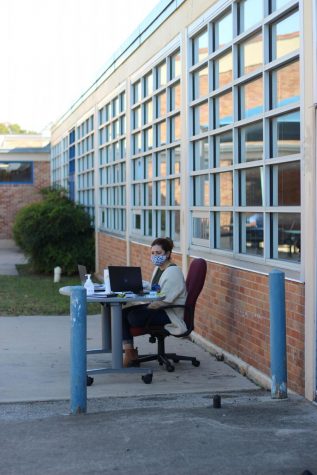
First, the Texas Education Agency required that AISD open its campuses to in-person students on Oct. 5, then TEA informed the district that its original model of in-person teaching during the pandemic did not constitute in-person learning. So McCallum and other district schools implement transitions between classes, making our campus even less safe. Teachers are required to come to school and risk their lives to teach students both in-person and virtually.
While this requirement has drawn much criticism, few people would disagree with the truth that some students need to be on campus. Some students have no internet at home and their parents cannot stay home because they have to work. Zoom is also not ideal for all learners; for them, there is constant frustration and unsolvable difficulties that come with distance learning. The lack of in-person peer interaction takes a toll on teenagers’ mental health and motivation to succeed.
But many teachers do not want to teach indoors due to the concern they have of getting the virus. Teachers feel unsafe in the building. The most recent notification that someone on campus tested positive for COVID-19 came on Thursday. Teachers have families at home they worry about and wish they could be with during this difficult time.
So if some students need to be on campus, and teachers are feeling unsafe doing so, what can be done to make things work?
A possible answer: the outdoor classroom initiative.
Just because teachers have to come to campus doesn’t mean that they to teach inside the building.
Principal Griffth met with Heather Kuhlken, an outdoor educator, who is the founder and director at Families in Nature and works with Green Schoolyards America. Griffith and Kuhlken took a stroll around the campus, where they noticed that the one-story layout of McCallum would work great with outdoor learning. The abundance of green space and courtyards on the Mac campus makes it an ideal setting for create outdoor classrooms for teachers.
Having students outside is something McCallum has rarely done in the past.
“It is a stretch for some folks to think about,” Griffith noted. “But we have a lot of teachers excited about it. They are willing to try it.”
The transition to teaching outdoors is even more crucial now since students who have returned to campus are now transitioning between classes.
When people are in the building, the risk of transmission of COVID-19 is higher. When people are outside the risk is lessened and that reduced risk enables students to be together and with their teachers safely.
“Teachers are being told they have to go back,” Kuhlken said, “and if they are older or have compromised immune systems or someone at home they’re caring for with a compromised immune system or are pregnant, it’s just not safe for them to be indoors, and so if they can be outdoors … it’s going to be a whole lot safer.”
And that safety might allow people to switch to in-person learning from virtual learning.
“Zoom is a great tool, but at the same time socially and emotionally for adolescents, being together is incredibly important,” Kulhken said. “This is the safest way that people can be together.
Families in Nature is a non-profit that has taken family and kids outdoors to learn, since 2008.
“People are healthier and happier and do better in school when they spend time in nature,” Kuhlken said. “And that applies even when society is not in the middle of a pandemic. With so many students at home or in classrooms, we often forget what it feels like to learn and exist in nature.”
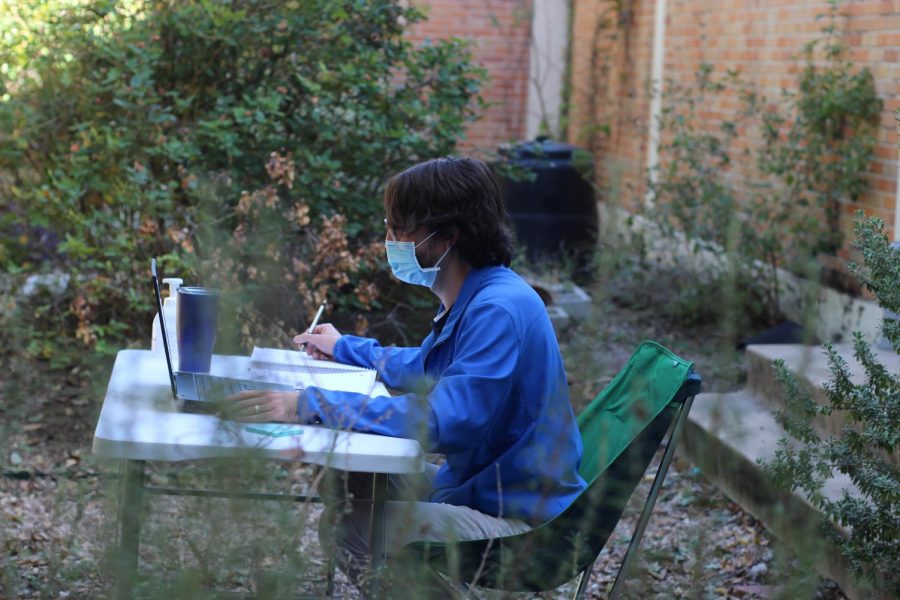
In 2013, Families in Nature started to expand the scope of its work by training guides to take people outside. A lot of teachers have signed up for this training to teach outdoors in their classrooms.
“We were well-positioned to help teachers to teach outside because we’ve been teaching teachers to move their classes outside for years,” Kuhlken said.
Taking class outdoors makes sense not only because it’s safer but also because it’s better for the mental health of both kids and teachers.
When people spend time in nature it reduces stress, anxiety, and helps people focus.
“It kind of has this advantage, nature is good for you and nature is an incredible teaching tool, but also it allows the social and emotional needs of adolescents to be met in the safest way possible.”
It’s not just good for students’ minds but also for their bodies.
“It gets kids out, moving their bodies more instead of sitting on zoom for eight hours a day.”
But these benefits of mind and body are secondary to the primary objective: the outdoor classroom is not for fun but rather for safety.
Librarian Jain Thompson has a son born with a heart murmur along with four elderly grandparents at home, and she along with many other teachers fear being in the building.
“Outdoor school is not a game,” she said. “It’s a safety necessity in a situation where we don’t have very many options as teachers.”
This is not the first time schools have moved outdoors due to the spread of illness. In the early 1900s, schools in New York moved outside to avoid getting tuberculosis.
If it was possible to adapt to a pandemic then, what is stopping us from doing it now?
“McCallum might be one of the first to actually adopt (this project), I think having a principal who knows the why and is confident in the how is helpful to making it happen faster,” Kuhlken said.
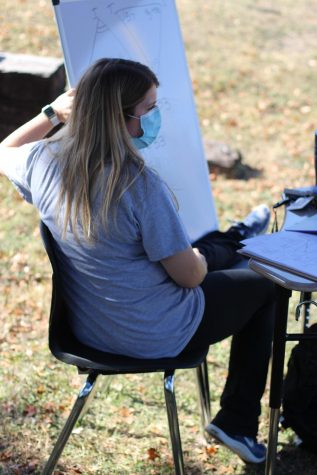
Green Schoolyards America is an organization that is helping schools across the nation change school grounds into green spaces where kids can learn. And they have a group called the Early Adopters Group, which McCallum may join. Together with the other schools, they will work together to resolve issues and set an example nationally of what outdoor learning should look like.
As of Oct. 29, Principal Griffith has around 10 teachers willing to pilot the project, taking all of their classes outside. There were also some teachers waiting to see what their class sizes looked like before committing to a decision.
Sarah Noack is one of the science teachers who is piloting the project.
“Students don’t have a choice [about the outdoor classroom]; it’s teachers who have a choice this time,” Noack said. “If a student is in my class, and they choose to come to McCallum for school they are going to be outdoors with me, and they’ll rotate just like normal class rotates.”
Students who decide to come back to school should be prepared to respond to changes in the natural elements.
“Kids just need to know that if we do go outdoors, you guys should also be prepared too with sunscreen or on a cold day with a blanket to wrap up in or maybe bug spray,” Noack said.
Returning students can expect these classrooms to be socially distanced and students who stick with virtual learning will Zoom into their classes from home. The classes moving outdoors are also elective courses. Choir for example will be using the outdoor amphitheater to sing.
Noack expressed that this is our current reality.
“I sorta can’t believe this is my life right now,” she said. “I was talking to one of my co-workers the other day, Ms. Shin, and I said my life feels like the show Punk’d (2003),” a show about being pranked.
I think we can all relate to that right now.
The Parent Teacher Student Association is on board and they have been doing a chair drive for students. The specific company is called Crazy Creek Chairs, which specializes in making outdoor folding chairs that students can comfortably use while learning.
The pandemic has provided our society an opportunity to reevaluate how schools are designed and we can see what works and what fails. Teaching outside may be better for everyone even when it’s not during a pandemic.
Principal Griffith said that she believes the outdoor classroom initiative is really important.
“I think that we thought this would be more temporary than it is and so we were putting Band-Aids on how to get through this,” Griffith said. “We’re coming to the realization that this is going to continue and so now it’s how do we really adjust.”
Transitioning to the outdoors may be a rocky path, but we owe it to ourselves to at least give it a try.
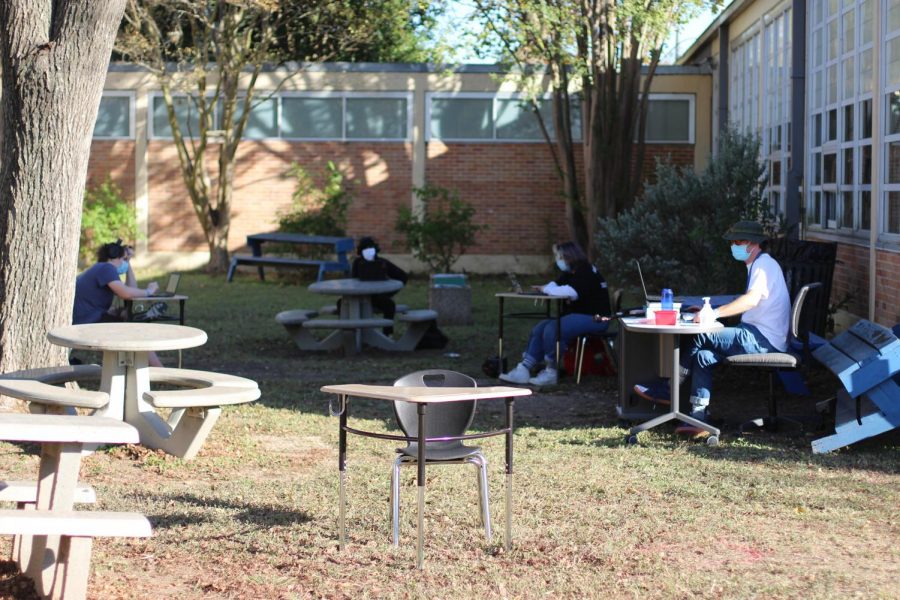





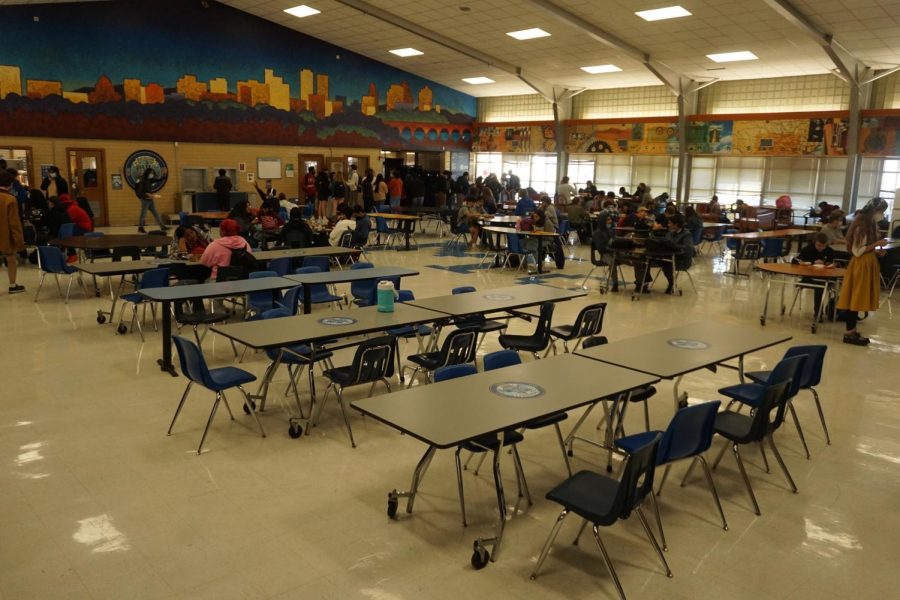
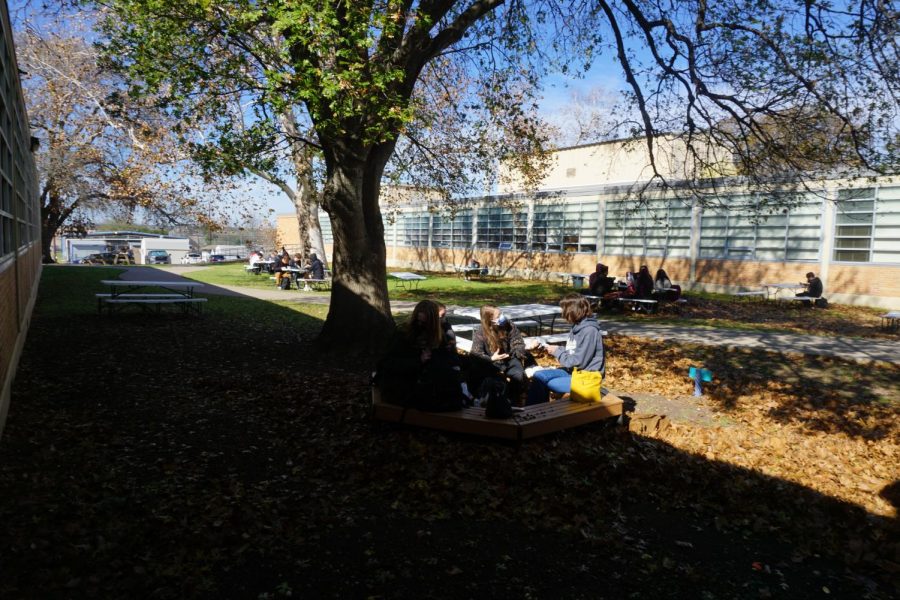

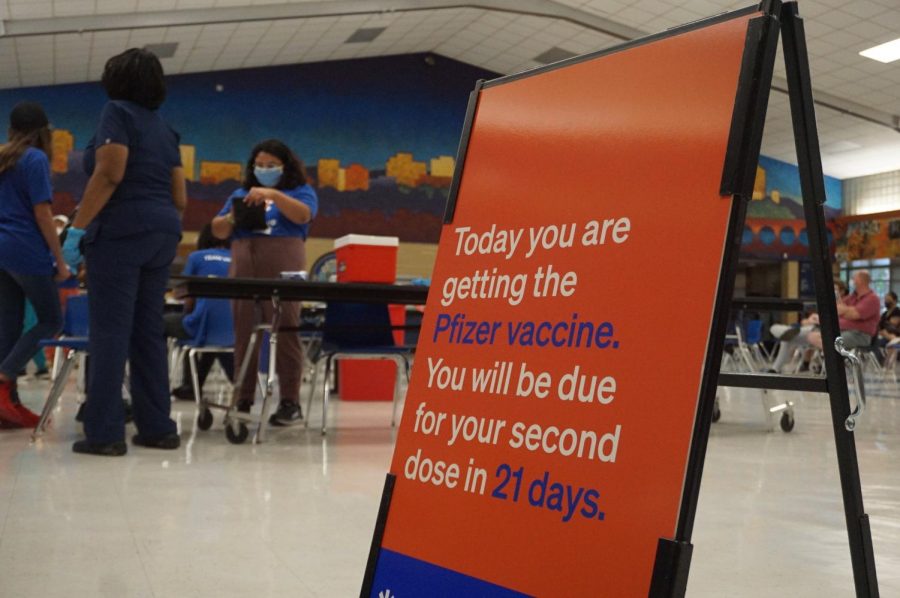
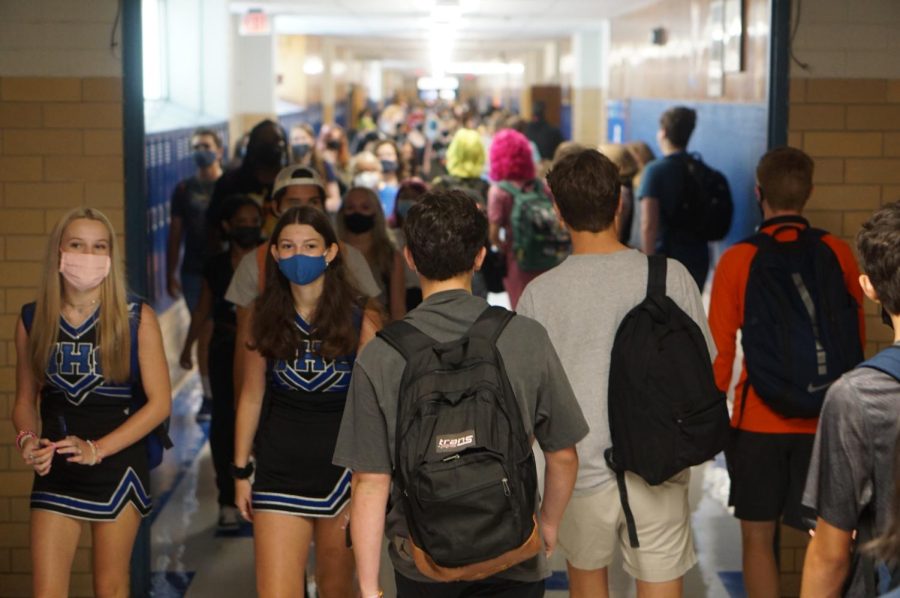
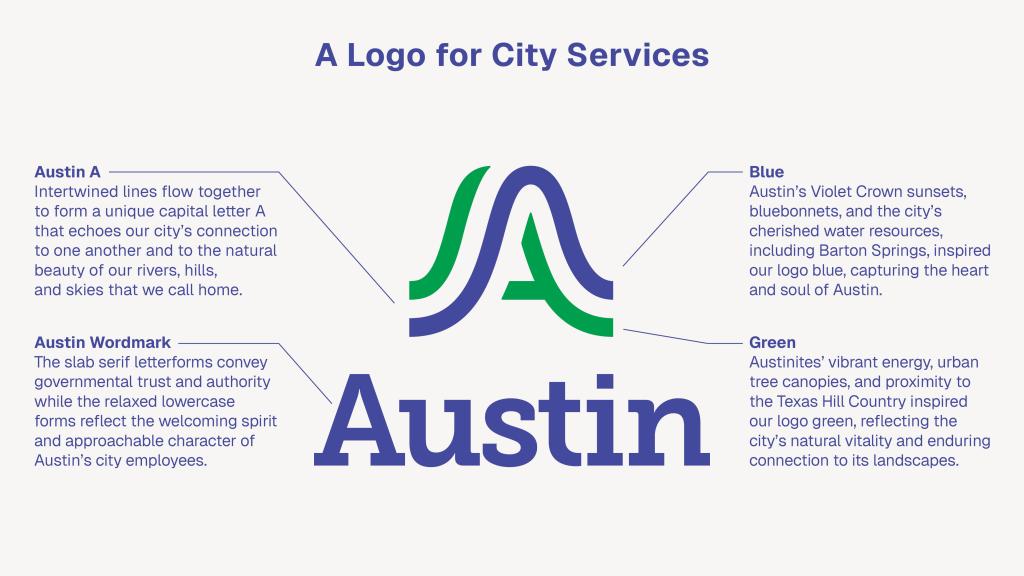

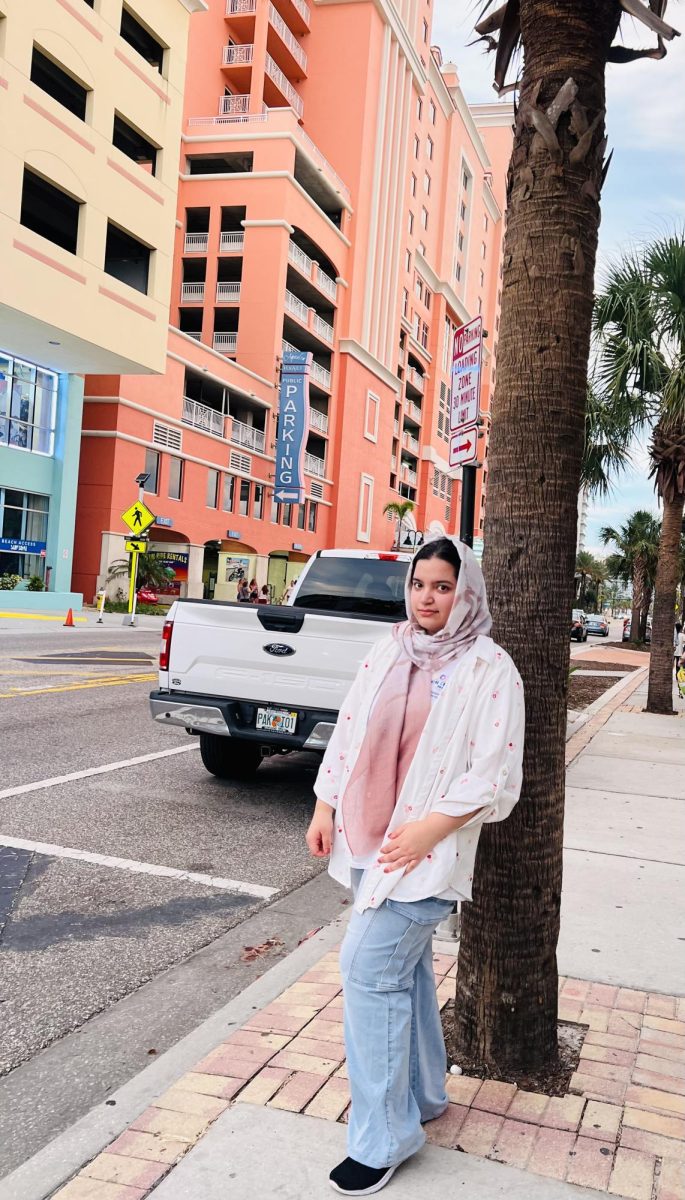


Bennett Fisher • Nov 13, 2020 at 11:26 am
I think this article was a good way to show how you can still be in school during a pandemic. I think outdoor classrooms are a really good way to keep the teachers and students safe. I think the outdoor classroom is also good because you are inside so much that it would be nice to work outside.
Sofia Hamlet • Nov 13, 2020 at 10:00 am
Outdoor school sounds like a good idea to keep everyone safe. With this weather too!
Hunter Heuett • Nov 12, 2020 at 11:33 am
I think that this is a wonderful way to be safe.
Iyyappan • Nov 11, 2020 at 4:01 am
Outdoor classrooms! This seems to be a safe and positive initiative to continue the education of our kids. It is said that outdoor spaces are completely safe for kids. Schools must think about setting up an outdoor classroom to prevent the spread of Covid-19. Children would enjoy this change for sure. At https://www.inspaceschoolfurniture.com/ you can find help in selecting the right kid-friendly furniture.
diego servin • Nov 10, 2020 at 7:50 pm
i really like this story because its show how teachers and others can be safe during this pandemic its could also be good for the mind and bodies.
Paris Haslanger • Nov 9, 2020 at 10:30 am
I really like how the article shows a positive side to learning in times of covid. It’s also showing a great take on zoom learning, where you may feel really trapped indoors, and you aren’t getting outside a lot, but these teachers are giving the kids in their classroom a chance to have a healthier and more fun workspace.